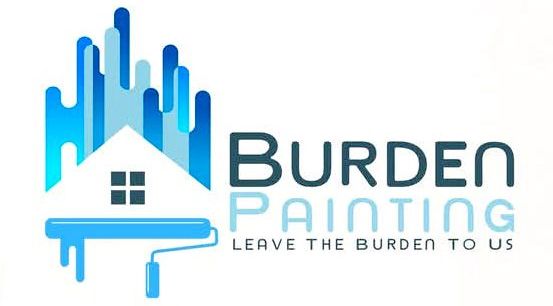When Should I Hire A Painting Company?
Deciding when to hire a painting company for your home or business is more than just a matter of aesthetics. It involves timing, maintenance, and the condition of your surfaces. Whether you're planning a renovation or simply aiming to keep your walls looking fresh, knowing the right moment to call in professionals can save you time, money, and frustration. In this article, we’ll explore key signs that it’s time to hire a painting company, the benefits of doing so, how to choose the right one, and tips for preparing your space. By the end, you’ll feel confident about making the best decision for your property.
Signs That It’s Time to Bring in Professionals
Often, the first hint that it’s time to hire professional painters comes when your walls begin showing wear and tear that spot repairs can’t fix. Peeling paint, flaking, fading, or areas where the paint has washed away are clear indications that the current coating is failing. Exterior surfaces get especially battered by weather, UV exposure, and moisture cycles. If a decent amount of your wall surface is showing these issues, patching alone may not suffice.
Other signs include chalking (when paint forms a powdery residue), blistering (bubbles beneath the paint), and mildew or mold stains. Once moisture has penetrated below the surface, it’s often necessary to remove and recoat properly, which is something professional crews are better equipped to handle. You may also notice that your color choice no longer suits the style or feel you want. A fresh color can dramatically change mood and curb appeal.
In short, if your paint is failing visibly, or it’s been many years since your last full repaint, calling a painting company may be the most efficient way to restore the integrity and appearance of your home.
Protecting Your Investment: Benefits of Professional Painting
Hiring experts offers several advantages that go far beyond a fresh coat of paint. First, professional teams have experience dealing with all kinds of surfaces—plaster, siding, wood, drywall—and know what products, primers, and techniques to use for each. They understand how to prep surfaces, repair damage, and apply coatings for long-lasting results. This expertise can lead to a longer lifespan for your paint job, fewer touch-ups, and better overall performance.
Another benefit is safety. Painting high or hard-to-reach areas, exterior walls, or ceilings can be risky without proper equipment and training. A professional crew comes with scaffolding, ladders, and health precautions for handling chemicals and fumes. They also typically carry insurance, which offers your protection in case of damage or accidents.
Professionals often work more efficiently, cutting down on project time. Because they have trained crews, tools, and workflows, the disruption to your daily routine is minimized. Lastly, you often save in the long run. A quality paint job carried out by a reliable team can reduce maintenance costs by resisting fading, peeling, or moisture damage. When you reach the point of asking whether to hire a painting company, these long-term savings often outweigh the upfront cost.
How Often Should You Repaint?
A common question homeowners ask is how frequently they should repaint the exterior or interior. The answer depends on climate, materials, and exposure. But as a general guideline, the typical interval for repainting your home’s exterior is every five to ten years. According to Better Homes and Gardens, it’s good to repaint your house every five to ten years. That range accounts for degradation caused by sun, rain, wind, and seasonal temperature swings.
Interior spaces usually tolerate longer intervals—rooms with moderate use like living rooms or dining rooms might be repainted less frequently, while high-traffic zones like kitchens or hallways may benefit from fresh coats more frequently. Ceiling and trim paint tends to last longer, though scuffs, stains, and small repairs may prompt earlier attention. If you find yourself repainting frequently (every couple of years), that may signal underlying problems like moisture or poor original surface prep, and that is a time to seek out a painting company.
Choosing the Right Contractor for the Job
Selecting a trustworthy and capable contractor is half the battle. Start by asking for referrals from neighbors, friends, or local online groups. Look at portfolios, and if available, ask to visit or see nearby projects they’ve completed. Investigate written reviews and check licensing and insurance credentials. A reliable painter will be transparent about these and willing to share documentation.
Next, request detailed estimates. A good contractor will assess surface preparation, repairs needed (such as patching, caulking, priming), type of paint (brands, finish, durability), number of coats, and cleanup. Beware of vague or unusually low bids. You want clarity on every component. Insist on a written contract that includes scope, color specifications, preparation methods, timelines, and payment terms.
Check for warranties or guarantees on both labor and paint. A contractor confident in their work will often offer limited warranties or touch-up provisions. Communication style is also a marker—if the company listens carefully to your needs, suggests useful improvements, and answers questions clearly, that's a good sign. Always confirm the schedule and timeline to ensure you’re comfortable with how long your space will be in flux.
When you’re ready to book, make sure the contractor visits in person to finalize measurements and details. Once work begins, maintain an open line of communication during the project to address adjustments or issues as they come.
Preparing Your Home for Painting Day
Getting your home ready before the painters arrive can help the job go smoothly and avoid delays. First, clear the work area. Remove furniture, wall hangings, artwork, and appliances as needed. Cover immovable items with drop cloths or plastic. Trim shrubs or plants near exterior walls to give painters room to work.
Inside, clean surfaces if they’re dusty or greasy; even gentle cleaning improves adhesion. Touch up underlying damage—holes, cracks, or water stains—if you can, or inform the crew so they can incorporate repairs. Remove outlet covers and switch plates beforehand. If you have pets or children, plan for areas where they can stay safely away from wet paint fumes.
Confirm parking and access logistics, especially for equipment, ladders, or scaffolding. Provide a clear path to the work areas. Ask the painting team about ventilation, drying times, and whether windows or doors need to stay open. Be clear on the hours they’ll work and whether they expect breaks. Finally, have a brief walkthrough with the crew to review colors, edge lines, and any trim or detail requests so everyone agrees before paint touches any surface.
Knowing when to bring in a professional is key to ensuring your painting project goes smoothly and delivers lasting results. Whether your surfaces are visibly deteriorated or you’re following a repaint interval guideline, hiring a skilled team can save headaches, time, and expense. When signs point to needing a refresh—peeling, fading, or simply wanting to update the look—turning to a painting company can be your best move. With careful selection of a contractor, clear planning, and proper preparation, your new paint finish will transform your space with confidence and durability.
Ready to refresh your home with a professional touch? Contact Burden Painting, Inc today to schedule a consultation and see how our expert team can bring your vision to life.




Share On: